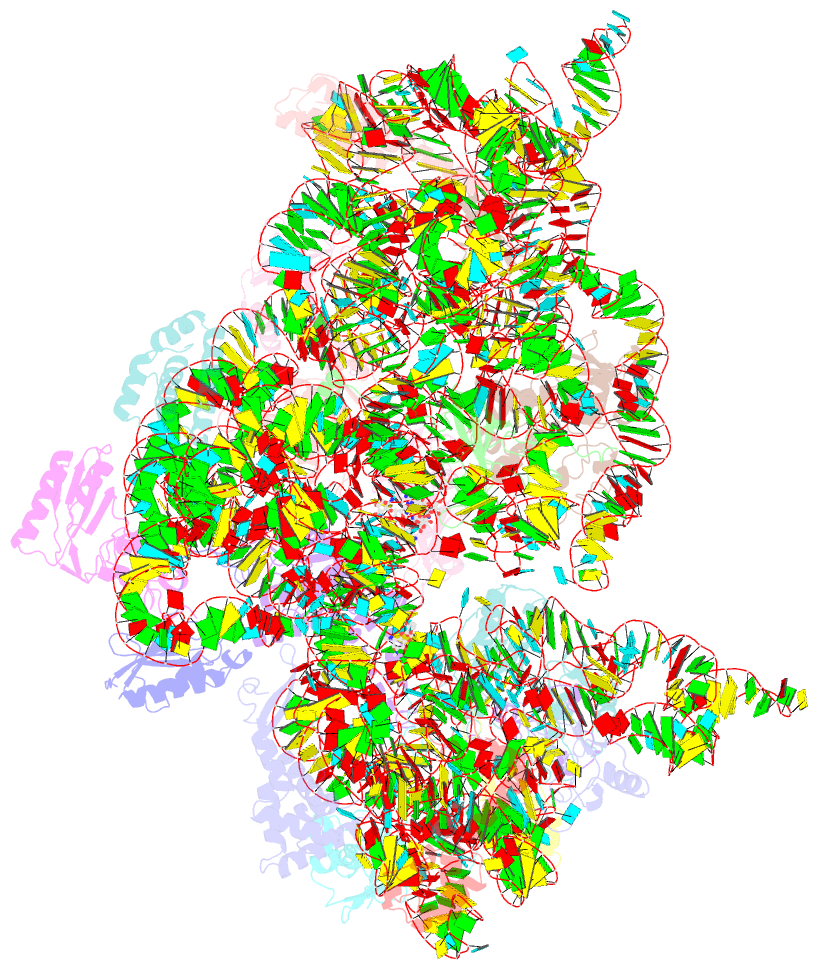Summary information and primary citation
- PDB-id
- 1fjg; SNAP-derived features in text and JSON formats;
DNAproDB
- Class
- ribosome
- Method
- X-ray (3.0 Å)
- Summary
- Structure of the thermus thermophilus 30s ribosomal subunit in complex with the antibiotics streptomycin, spectinomycin, and paromomycin
- Reference
- Carter AP, Clemons Jr WM, Brodersen DE, Morgan-Warren RJ, Wimberly BT, Ramakrishnan V (2000): "Functional insights from the structure of the 30S ribosomal subunit and its interactions with antibiotics." Nature, 407, 340-348. doi: 10.1038/35030019.
- Abstract
- The 30S ribosomal subunit has two primary functions in protein synthesis. It discriminates against aminoacyl transfer RNAs that do not match the codon of messenger RNA, thereby ensuring accuracy in translation of the genetic message in a process called decoding. Also, it works with the 50S subunit to move the tRNAs and associated mRNA by precisely one codon, in a process called translocation. Here we describe the functional implications of the high-resolution 30S crystal structure presented in the accompanying paper, and infer details of the interactions between the 30S subunit and its tRNA and mRNA ligands. We also describe the crystal structure of the 30S subunit complexed with the antibiotics paromomycin, streptomycin and spectinomycin, which interfere with decoding and translocation. This work reveals the structural basis for the action of these antibiotics, and leads to a model for the role of the universally conserved 16S RNA residues A1492 and A1493 in the decoding process.





